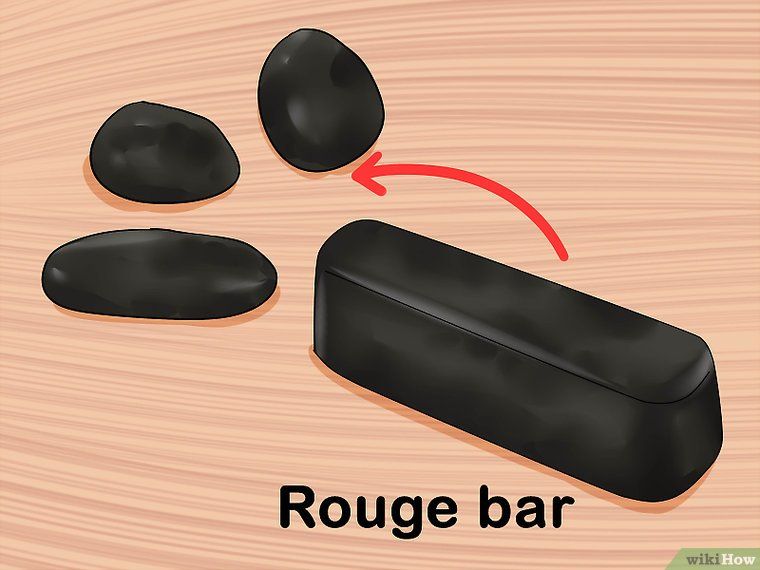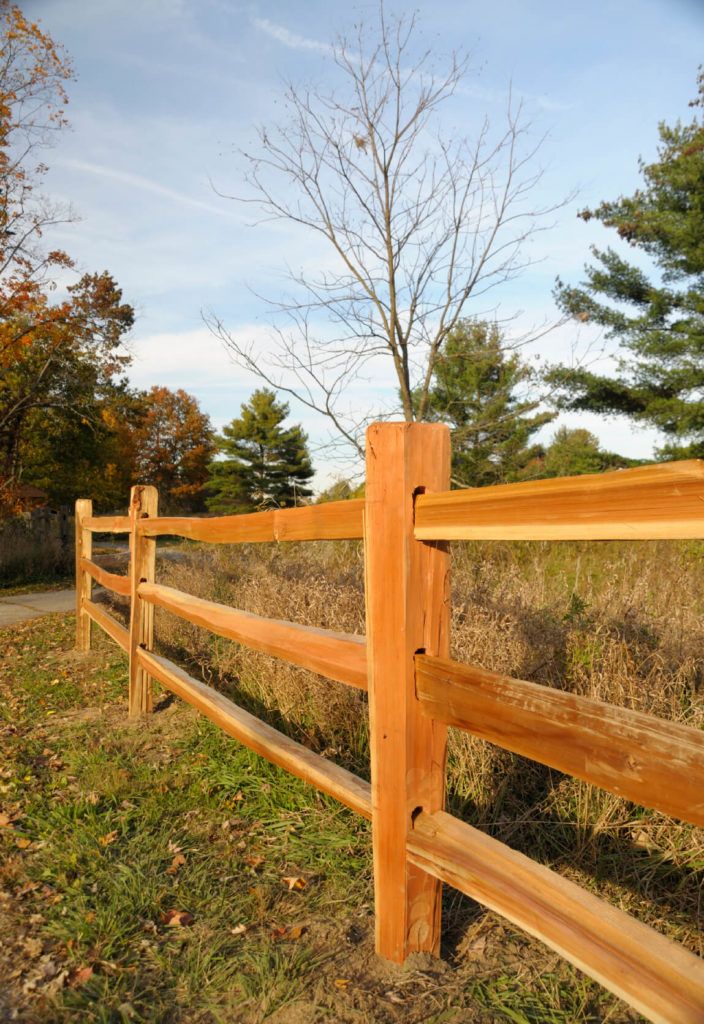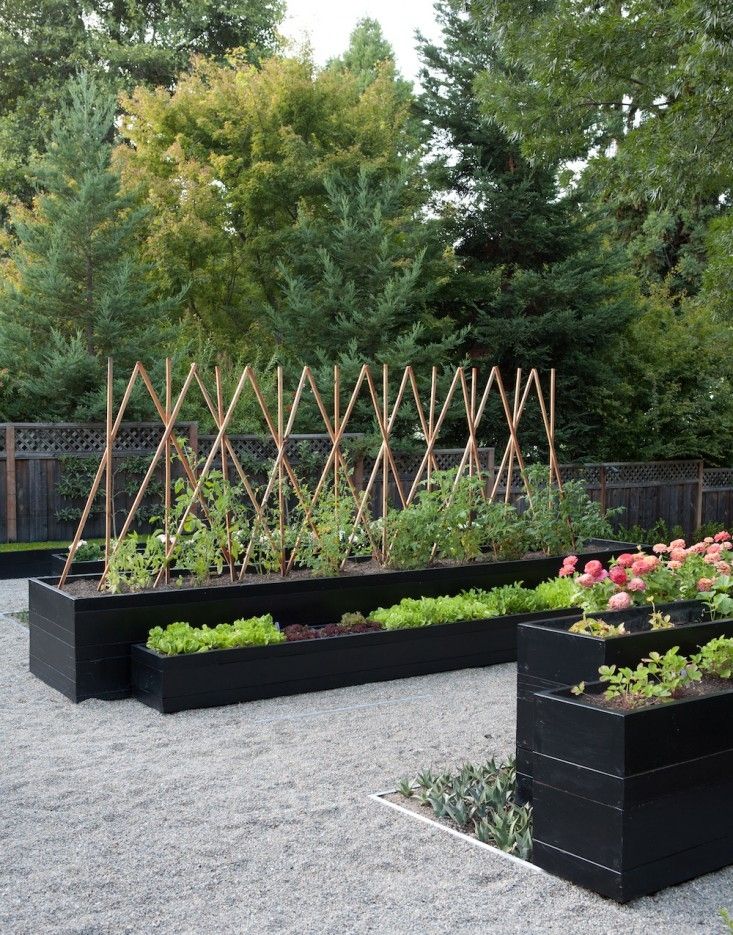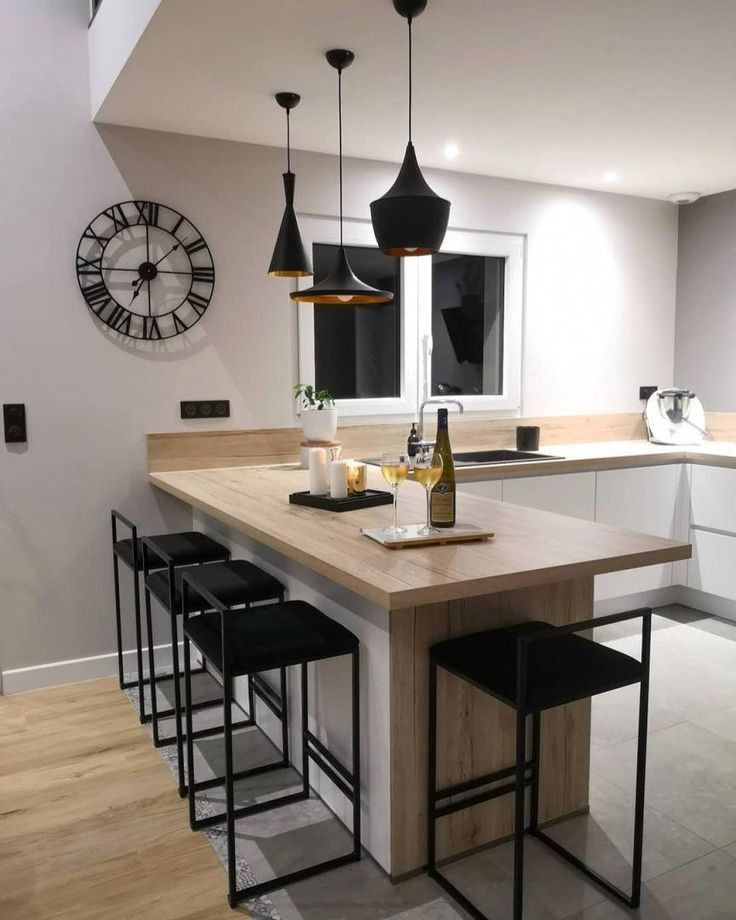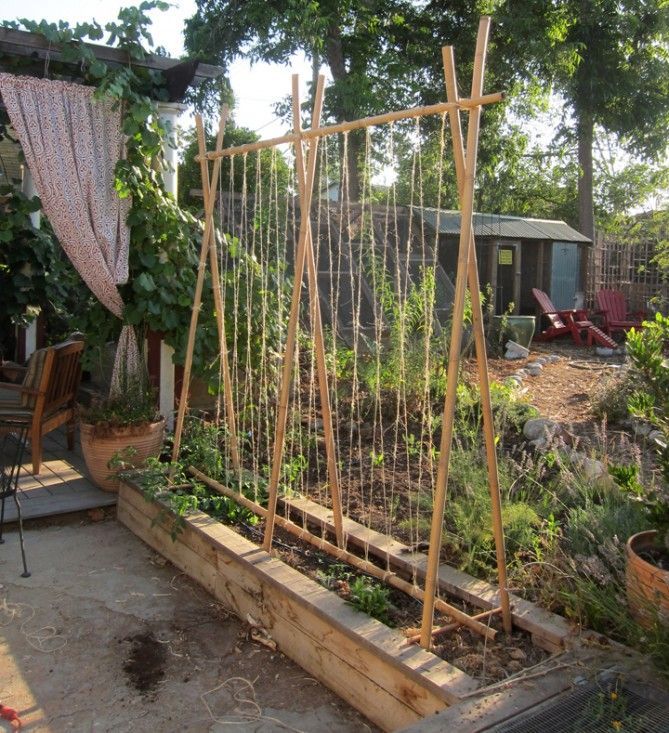How to polish flagstone
how-to clean dry laid flagstone
Flagstone Maintenance and How to clean dry laid flagstone
How to clean an older, dry laid flagstone patio and then how-to replace the material between the stones
This question comes up sometimes: people ask me, “how do I clean my flagstone, without removing the stuff from between the joints?” Since I am your hardscape helper, I figured I’ll toss you a little lesson.
Professional flagstone advice
As a flagstone patio ages, it can gain a thin layer of grime. You may notice your patio stones darkening in color, over the years. This may or may not be much of an issue for you. Often, the flagstones will darken slightly, but it still looks great, so who cares? Other times, the flagstones may darken unevenly, or in a manner that is otherwise unappealing. Often, it’s just a matter of taste. The worst though, is if your flagstones become slippery, with the grime of the ages. If that happens, then it’s probably time to clean that patio!
So everyone’s first thought is the power washer AKA pressure washer. But everyone asks me, won’t that remove the stuff from the joints? Of course it will! And there’s really no way around it.
But it’s not so bad, really. We’ll get through this. Together.
So you have two options, really–one is scrubbing. The other is power washing and then re-filling the joints. Either option takes a bit of time. But don’t fret, you can do it!
How to clean dry laid flagstone: Pressure washing
- First of all, I’ll usually recommend scrubbing with a scrub brush and soapy water. A wire brush for the worst spots. But if you insist on using a pressure washer to clean your patio, then here you go…
- Have the machine on it’s lowest setting, at least at first. A powerful pressure washer can, and will destroy flagstones.
- Start out in a seldom trafficked part of the patio–just in case you do end up damaging the first couple stones you try and clean.
- Get the whole patio clean and let the old joint material get washed out, it’s no big deal, really.
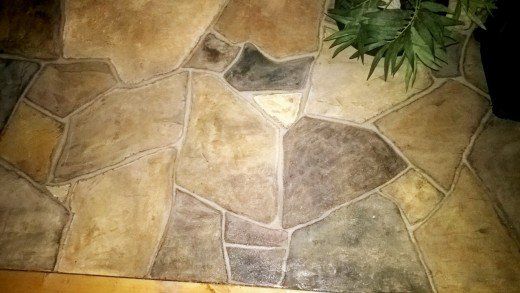 I can fill the joints on a thousand square foot patio in an hour or so.
I can fill the joints on a thousand square foot patio in an hour or so. - Let the patio dry. Go have yourself a sandwich.
How to install stone dust in between your flagstones
- Get out you shop broom, one of them big broad brooms, not a kitchen broom.
- Put on some tunes. Something that makes you smile and/or dance.
- Dump out a 5 gallon bucket of screenings AKA stone dust AKA decomposed granite–or whatever joint filling material you are using.
- Spread that stuff all across your patio, going back and forth over the joints. Get the whole patio covered and all the joints filled.
- Broom off most of the excess. Sweep it up into a pile and get it back into your bucket or wheel barrow. Most of the excess–you don’t need the patio stones clean of stone dust, not yet.
- Hose off the entire patio. Hose it down. Soak it. I usually use a shower setting, if available. Many joints will just sink, as the stone dust settles down into the crack.
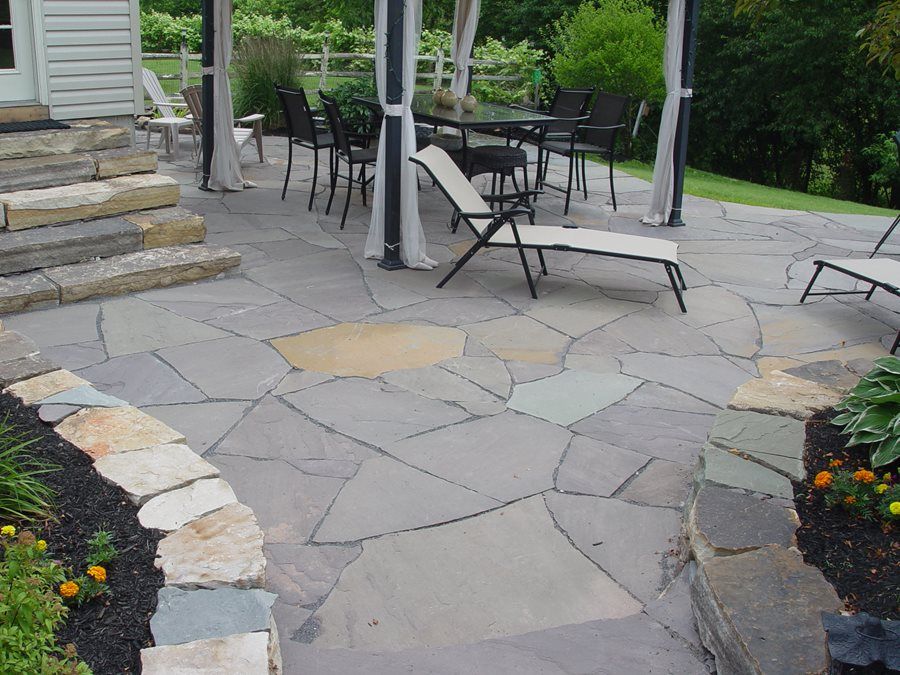 That’s okay, you want that to happen–we want all of them voids to get nicely filled.
That’s okay, you want that to happen–we want all of them voids to get nicely filled. - Let it dry.
- Cover the patio with stone dust again and repeat the sweeping step. Sweep it in, patiently. This time, try and get the patio a bit cleaner, less dust on top of the stones then last time.
- Sweep up into a pile, again. Hose down–again.
- You may have to go for a third pass. Probably you’ll just want to do a spot fill. Look for and find whatever spots need more stone dust, and top them off using your hand, or a small hand brush–either a masons brush or just like a little dust-pan and brush type brush.
- Lightly hose it off for the (hopefully) final pass. Let the hose push the remaining dust from atop the stones into the joints.
- Let it dry.
- If there’ still a bit on top of the stones, I’d hit it, carefully, with a leaf blower.
A flagstone patios joints can never be truly “flush with the top of the stone”. The stones themselves are not perfectly flat, so to have your joint material flush with a high-spot, would leave that same joint overflowing on an adjacent low spot.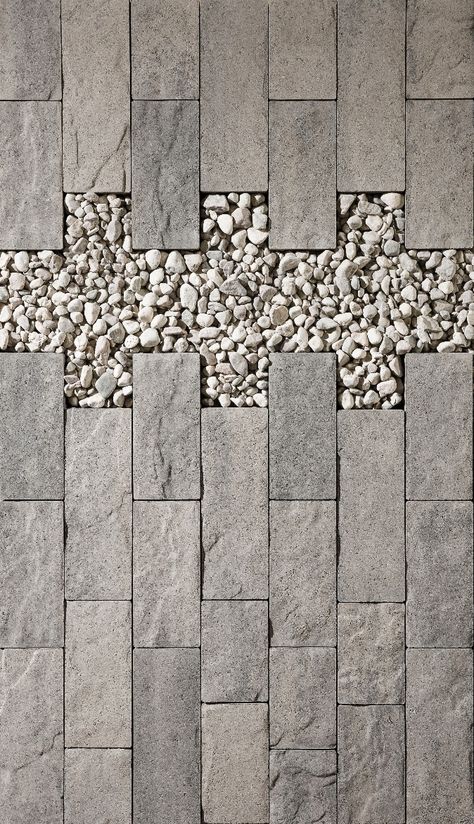 Early in my flagstone patio career I used to try and keep the screenings in my flagstone joints as close to level with the stones as possible, but with foot traffic, wind and rain, the joints seem to naturally level off to around an average of one eighth of an inch shy of flush with the flagstone.
Early in my flagstone patio career I used to try and keep the screenings in my flagstone joints as close to level with the stones as possible, but with foot traffic, wind and rain, the joints seem to naturally level off to around an average of one eighth of an inch shy of flush with the flagstone.
this is how you do it
That wasn’t so bad, was it? Hey, I do this stuff all the time. So do my helpers–and we never complain! Hey, the task is not super easy, but you’re outside, birds are singing–and you have an awesome flagstone patio. Life is good!
Note, if you are using screenings as your joint filler, like I recommend here, then the joint filler will stiffen up a little bit, and become almost semi-solid, after hosing and drying a couple times. That’s because the stone dust (screenings) contains both 1/8th inch chips of stone as well as fine, flour like dust. The dust hardens up a little, when made wet and then dried.
How to clean dry laid flagstone with a scrub brush
- Get out your scrub brush and put on some knee pads.
 Also grab a wire brush–preferably a wider wire brush, like one of the ones that’s 3″ wide, not a 1 inch wide one.
Also grab a wire brush–preferably a wider wire brush, like one of the ones that’s 3″ wide, not a 1 inch wide one. - Go and try the scrub brush–with a bucket of soapy water.
- Didn’t work? Fine, get wire brushing. HINT, you will need to wire brush–if the flagstones are dirty enough that you feel they need a cleaning, then yeah, the wire brush is what it’s going to take.
- Wire brush each and every stone clean. Then hose it off. Still dirty? Sorry kiddo, better put them knee pads back on….
- Repeat until clean.
- After all that brush, right next to the joints, and all that hosing, you will have lost some of the joint filling material, sand, soil, or stone dust, that was in the cracks between your stones. No biggie. Scroll up and read the “Re-filling the flagstone joints after pressure washing” part. Since you scrubbed, you won’t have to do nearly as much work as this, but the guidelines still apply. Take stone dust, sweep it in, hose it off, let dry, repeat/spot check, as needed.

So there you go, free DIY advice from flagstone professional and stone mason. If you need more help, then I will direct you now to my consultation services. And I look forward to hearing from you.
DIY Flagstone and Hardscape help
My rates for DIY consultations are as follows:
$80.00 for a half hour consultation
$115.00 for a full hour
Monies are payable via paypa, Zelle or venmo also accepted.
How to Care for & Clean Flagstones | Home Guides
By Jann Seal Updated March 01, 2022
Cleaning flagstone, whether it's on a patio, walkway or the facade of your home, is a relatively simple task that can be accomplished in an afternoon. Whether stains, mold, or wear and tear have blemished the surface of your flat-stoned patio pavers, a quick pick-me-up restores their original look. Start with the simplest approach with a hose, bucket of water, soft-bristled scrub brush, a bit of dish soap and some elbow grease and watch how the stains wash away, revealing the original patina of the sedimentary rock.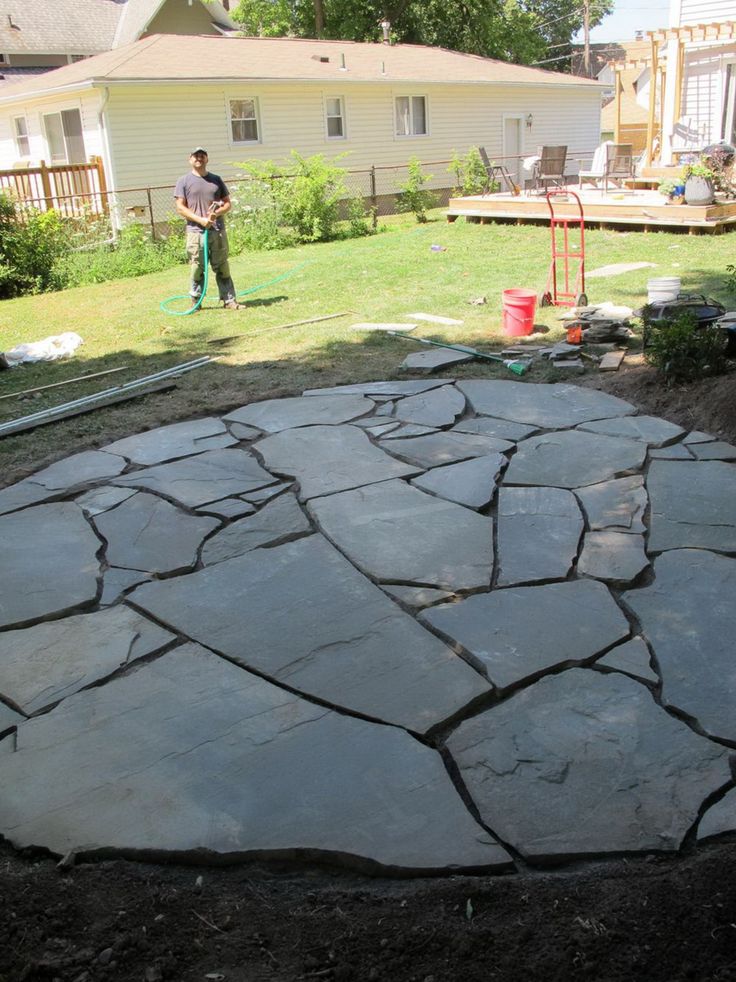
Flagstones in Architectural History
Castles in England, Scotland and the Scandinavian countries had flagstone exteriors for centuries because of its durability and appearance. A flat sedimentary rock, the stone forms pavers, flooring and roofing, and its sandstone composition gives it a mellow tone and texture. The word "flaga," which is adapted from the Old Norse, means a stone slab, according to Westminster Stone. Recent architects, hoping to replicate the look of European castles, have adopted flagstone to build home facades in addition to creating patios and walkways with the stone.
The uneven look of flagstone gives it a natural appeal. It’s not machine cut and exact in its proportions, according to Suistone, making it a versatile stone that revels in its random appearance.
Having evolved from an architectural element, flagstone was adapted in landscaping to create what is known as “hardscape.” Flagstone adds interest to walkways, patios and driveways, and it can create a retaining wall. Veneers for walls and fireplace surrounds have replaced the thick slabs, making interiors more attractive for the stone.
Veneers for walls and fireplace surrounds have replaced the thick slabs, making interiors more attractive for the stone.
Caring for Flagstone
Flagstone pavers are long-lasting if properly cared for. When installed, they don’t need grout or a connecting material. And harsh weather conditions won’t affect the stone, according to ArchitecturesIdeas. They won’t shrink, move or expand as the weather changes.
A patio needs only a rinse with a hose followed by a mixture created with dish soap and water to wash away any stains. Stubborn stains may need a dose of ammonia added to the wash water, recommends New Life Rockeries.
Cleaning flagstone with mold requires a different approach. Use a large bristle brush with a long handle and spread white vinegar over the pavers. Let the vinegar set on the stone for several minutes before rinsing it off with a hose and touching it up with a bristle brush. If using a commercial cleaning solution, be sure to choose one designed for natural stone, suggests Centurion Stone of Arizona.
What Not to Do When Cleaning Flagstone
Harsh cleaners cause more damage than help. Stay away from them. Ammonia will work, but be careful when working with it as it may affect your skin. Properly maintain the pavers and patio by sweeping and hosing them frequently. Never allow excess rainwater to stand on the patio or walkway to avoid the buildup of mold and other staining elements. Heavy winds blow debris onto the pavers along with dust and other particles, so a good sweeping after inclement weather helps maintain the longevity of your pavers.
Use outdoor bleach on flagstone walls and retaining walls but only as a spot cleaner. It won’t affect your plants, but be sure to follow the instructions very carefully. Don’t use the outdoor bleach too frequently – once every year should be enough. Give the area a good hosing off after using the bleach.
References
- New Life Rockeries: How to Clean Flagstone the Right Way
- Suistone: Why Natural Stone Flagstone Rules the World of Architecture
- ArchitecturesIdeas: Flagstone Patio
- Centurion Stone of Arizona: A Flagstone Maintenance Guide to Keep Your Patio Looking Pristine
- Westminster Stone: Where Did Flagstones Get Their Name?
Tips
- Before applying bleach or stone cleaners to your flagstone, test them in an inconspicuous spot.

- If your flagstone has been sealed, follow any maintenance instructions provided by the installer. Apart from regular sweeping and squeegeeing, flagstone typically only requires cleaning once every one to three years.
Writer Bio
A versatile writer, Jann enjoys research as well as doing the actual writing. A career in television writing, as a magazine contributor and editor and celebrity interviewer, Jann adapts to her environment, having traveled the world, living overseas and packing and unpacking her treasures for a new location over 30 times.
Natural stone processing
Since most stones are mined in the form of shapeless massive rock, they need to be processed in order to enable their further use in one area or another. The exception is rocks that have a natural decorative value (boulder, pebbles, coral, pearls, etc.). A variety of textured processing of natural stone gives it an aesthetic appearance, helps to reveal and emphasize decorative properties, or hide imperfections.
Modern technologies for processing natural stone
Mechanized stone-cutting production allows you to process any rock and give their surface the necessary texture after mining and sawing. There are the following technologies for processing natural stone to obtain the desired surface texture. Some of them can be found below.
Sawn surface - obtained by sawing the workpiece. For this, machines with a rectilinear movement of the saw frame, band, wire and circular saws are used. The surface becomes rough with discontinuous grooves up to 5 mm deep.
Surfaces with this texture are used for paving areas, garden paths, lining plinths and walls. In addition, these products are used as a material for subsequent, finer processing - polishing, grinding, burnishing.
Grinded surface - formed as a result of processing the workpiece with grinding wheels, on portal and bridge machines, grinding and polishing conveyors and grinding and polishing machines for bulk products.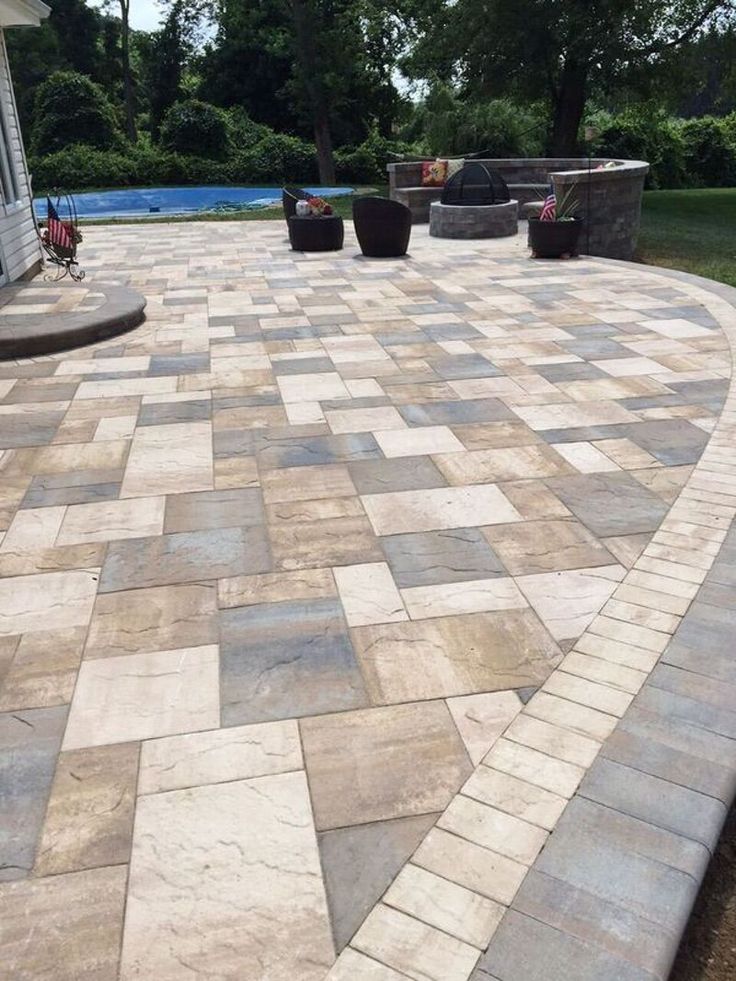 The surface acquires a uniform roughness, with relief irregularities up to 0.5 mm high. This technology is applicable for light rocks with an unexpressed pattern. It is not suitable for dark, especially with a pattern of rocks, as it significantly hides the pattern and color.
The surface acquires a uniform roughness, with relief irregularities up to 0.5 mm high. This technology is applicable for light rocks with an unexpressed pattern. It is not suitable for dark, especially with a pattern of rocks, as it significantly hides the pattern and color.
These products are used for finishing floors, platforms, stairs and places where it is necessary to reduce slip.
Polished texture - achieved using special grinding wheels coated with micro-grinding powders. The surface is smooth, but does not have a mirror finish. Burnishing opens the pattern well, highlighting the structure of the stone.
The slabs obtained in this way are used for cladding the floor plane and external walls of buildings.
Polished - achieved by subsequent grinding of the polished surface on the conveyor with powder-coated wheels, and then with felt and cloth wheels. A special shine is given to the polished stone by the use of Goy paste or tin nitrate.
Polishing perfectly reveals the pattern of the stone and enhances the color.
This material is used for interior decoration, production of window sills, countertops and other interior elements.
Conchoidal - has uniform depressions from 1 to 4 mm deep, which gives the stone a special decorative appearance.
Boards with this texture are used for exterior decoration of buildings and for interior design.
Melted - obtained as a result of the use of thermal stone processing technology on a thermal gas jet machine. It shows texture and color well, while giving the impression that the stone is slightly melted.
Products after heat treatment are used for finishing facades of buildings, stairs and platforms.
Rocky surface texture - is an imitation of roughly processed rock with the presence of depressions and protrusions from 50 to 200 mm, arranged in a chaotic manner and not subjected to additional processing.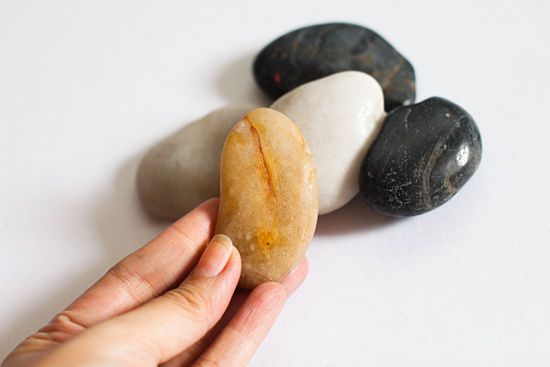 The effect is achieved by chipping the rock from a previously weakened surface.
The effect is achieved by chipping the rock from a previously weakened surface.
A material with this texture for finishing the facades of large buildings, emphasizing their significance and monumentality, as well as their natural connection with the surrounding landscape.
Common methods of processing natural stone
Modern methods of processing natural stone are divided into 2 types: mechanical and physical-mechanical.
Mechanical methods include the most commonly used methods up to now, such as shearing, impact breaking and cutting.
When chipping, the following is achieved: the texture of a flat and relief "rock", hummocky, characterized on the front surface by the presence of evenly distributed depressions and bumps texture and relief texture, with the presence of parallel grooves with a height of 0.5 to 3 mm.
Cutting is the most common modern stone processing method. It is carried out by the method of disk, rope or strip sawing.
It is carried out by the method of disk, rope or strip sawing.
Strip sawing is divided into sawing with steel and cast iron shot and diamond strip sawing.
Disc sawing is becoming more and more widespread in the processing of rocks of any hardness and is subdivided into disc and diamond disc sawing with cutters.
Rope sawing is widely used for cutting rocks of various densities. Its development is in 3 directions: wire rope with the help of an abrasive, diamond wire sawing and sawing with ropes reinforced with carbide washers.
Impact destruction of stone is most widely used in the practice of production of hewn products. Most often, steps, foundations of monuments, bridge abutments and other elements are made in this way, where a point texture of processing is achieved.
A well-deserved place in the industry is beginning to be occupied by the method of ultrasonic decorative processing of stone in an abrasive environment.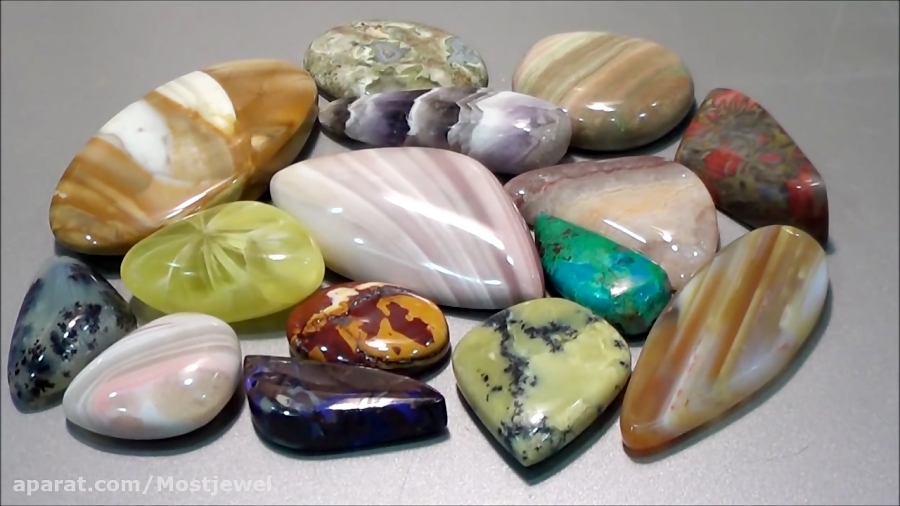 The process proceeds very slowly, but is characterized by very high accuracy.
The process proceeds very slowly, but is characterized by very high accuracy.
Physico-mechanical methods include treatment with high-frequency currents and a widely used method of treating stone with thermoset gas burners of kerosene-oxygen and gasoline-air types, which is used for the production of architectural and construction details and the manufacture of monuments from high-strength rocks.
The method of high frequency currents is most suitable for processing blanks in the production of curbs, parapets, steps, etc. This method, when using high-frequency oscillations up to 20 MHz, is considered the most accurate and promising.
Natural stone processing at home
According to the degree of complexity, all stones are divided into soft and hard. Soft stones can be easily processed with the same tool as metal products, and hard stones require the use of a special tool. Stone processing at home requires a separate room equipped with exhaust ventilation, since such work as cutting and grinding is accompanied by a large amount of stone dust, which is very harmful to health.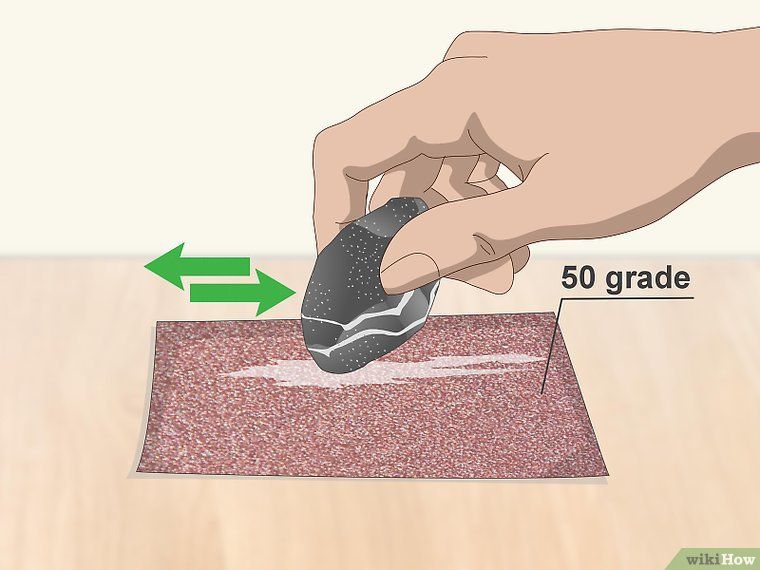
Natural stone can be processed at home, such as cutting, grinding, polishing and engraving. It is important to remember that cutting, grinding and polishing of stone is carried out only with a continuous supply of water. The water cools the cutting element, removes the slurry generated during operation and significantly reduces the level of stone dust.
Cutting - rough is carried out using an ordinary grinder and a stone disc. More accurate will require the use of a sawmill-type machine with a metal, preferably a movable platform.
Grinding - carried out using a grinder (manual or stationary) or grinder with appropriate grinding wheels. The easiest way to grind, but only for stones up to 20-25 cm long: pour abrasive powder on a cast-iron plate and pour water, put a stone on top and rub until it acquires the desired surface. The fine-grained structure of cast iron facilitates the processing of stone.
Polishing - performed using special polishing wheels and Goy paste.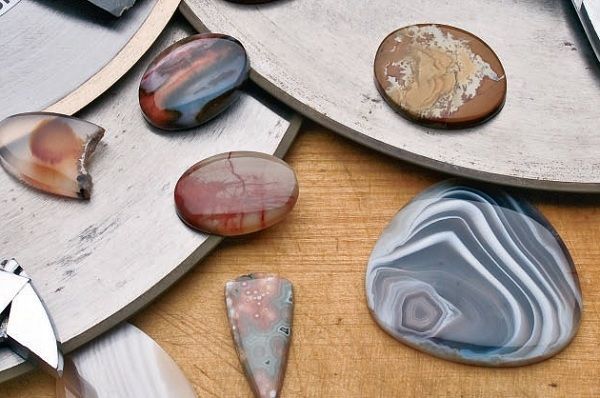
Engraving - possible with a precision tool or with a set of stone chisels and a hammer. In this case, the engraving must be polished using an electric drill and polishing nozzles.
8 main ways. Popular stone processing methods and their features
About the company / Useful articles / 8 main types of natural stone processing: how to do it right and why
Heading: Useful articles
For what purpose natural stone is used depends not only on its type, but also on the type of processing. Competent cutting, grinding or polishing helps to reveal the real beauty of the material and significantly expand the scope of its application. Processing natural stone is not so easy. This process must be carried out in strict accordance with quality standards and take into account the density of the rock, its color and texture.
Stone processing, video: features and most popular methods
8 main ways of processing natural stone
The processing of natural stone has fundamental differences depending on the type of rock and the future purpose of the material. So they distinguish:
1. Polishing
Such processing of natural stone gives it a smooth surface and amazing shine. With this method, the veins of the rock are able to create unique patterns that look much richer than before polishing. For this method of influence, special are used:
- Sanding powder coated machines.
- Felt circles.
Tools are needed to properly polish the stone to a perfectly even finish.
2. Grinding
The grinding type of stone treatment completely removes the face layer from it, allowing the texture to show through. After the work carried out, small traces of abrasive wheels remain on the rock, which are almost invisible.
Finished stone products are useful for decorating the interior or exterior steps of a house. They can be drilled or cut. Thanks to the rough surface, an excellent anti-slip effect is achieved.
3. Sawing
Based on the name of the method, it is clear that we are talking about sawing large pieces of rock into slabs. An abrasive method can be added to the usual cutting - then the texture of the plate will acquire even greater relief.
Depending on how the stone is cut, it can be used to decorate garden paths or building facades. One of the most popular types of sawn material is pavers and curbs.
4. Skol
This stone treatment imitates the natural process in which smaller blocks are chipped from one solid block. In this case, special wedges are inserted into the rock, which, under pressure, break the material into pieces. The resulting rocky texture can be successfully used in gardening art, in the manufacture of monuments and monuments.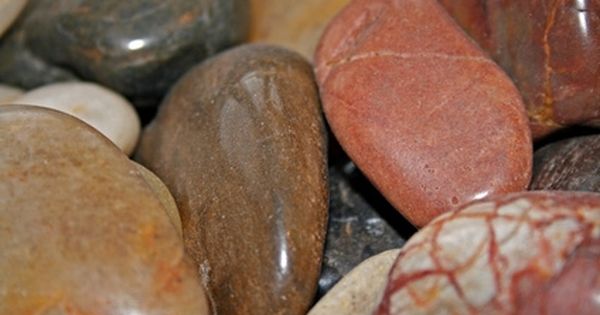
Often, a chipping method of influencing the rock is stone processing with your own hands, because this way you can achieve the required dimensions and relief of the material
5. Brushing
Similar methods of stone processing are the mechanical action on the rock with water and special brushes. As a result, the surface of the material is smooth, and at the same time, completely non-slippery. Such polishing of the stone allows it to be used to create:
- Countertops.
- steps.
- Floor covering.
6. Scratched surface
This is the processing of the end and edge of natural rock to obtain shallow, chaotic furrows. This method is more interesting than ordinary stone grinding and allows you to give the material a special look. Surfaces treated in this way are very often used for the manufacture of steps and basement floors of buildings.
"Scratched" stones have a very interesting appearance and are actively used in construction
7. Antique processing
Of course, this view does not show how sawing stone was done in ancient times, but it can give the rock an artificially aged appearance. To achieve this effect, the boards are placed in acid, which helps to remove the remaining foreign particles and leaves small grooves behind .
After the stone has been immersed in acid, it takes on a texture very similar to antique marble and granite. This technique allows you to use it in interiors of styles Antique and Classic
8. Heat treatment
For materials used in outdoor finishing works, this method is preferable. It is faster and easier than others, and it does not take as much effort to achieve the desired effect as polishing a stone or grinding it.
It is worth noting that heat treated boards have excellent anti-slip performance. They are less susceptible to the damaging effects of sudden changes in weather conditions
With this treatment, the rock lends itself to firing, after which soft inclusions simply burn out. Most often, such a stone is used for paving footpaths, as well as decorating fences and gates.
Processing the stone you see here is a quick way to get excellent material for construction , using high temperature heating
Is it worth it to process the stone yourself
You already know how to cut stone and process it in other ways. But now the question arises whether it is worth doing it yourself. If you have extra time and desire, then you can. But it is always better to order a finished stone from a trusted company and be sure of its quality.